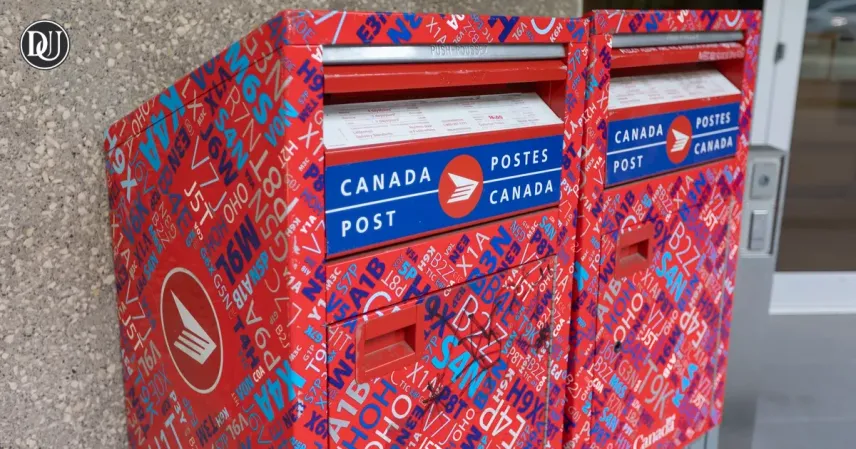Canada Post is preparing for a significant disruption to its services, starting Friday, May 23, 2025. The Canadian Union of Postal Workers (CUPW) has issued strike notices, signaling a potential nationwide work stoppage or rotating strike actions. With over 55,000 members in the union, the potential disruption could impact millions of Canadians who rely on postal services for both personal and business needs.
📦 What Does This Mean for Canadians?
If the union moves forward with a national strike, all mail and parcel deliveries across the country will come to a halt. This means that consumers will not receive personal letters, bills, packages, or important government documents until the strike is resolved. Canada Post has emphasized that no new mail or parcels will be accepted, and any ongoing deliveries will be paused.
In the event of a rotating strike, the disruptions would be more localized. Certain regions may still receive deliveries, while others face delays. However, Canada Post has advised that customers should expect interruptions in service regardless of the strike format, as operations across the network will be impacted.
🛑 Why is the Strike Happening?
The strike comes after a breakdown in contract negotiations between CUPW and Canada Post. The union has expressed concerns that Canada Post is attempting to unilaterally change working conditions and reduce employee benefits once current agreements expire. CUPW has voiced frustration over Canada Post's approach to bargaining, citing that the company's demands could affect the financial and job security of workers.
The union is calling for better wages, improved benefits, and more job security for its members. However, Canada Post insists that its proposals are necessary to modernize its services and adapt to changing market conditions. As both sides dig in their heels, the strike appears increasingly likely, with CUPW members prepared to take action as early as Friday, May 23.
📉 Impact on Canadian Businesses
This strike has the potential to significantly affect Canadian businesses, especially small businesses that rely on Canada Post for mailing important documents or shipping products. During the previous strike in 2024, small businesses reported losses totaling over $1 billion due to delayed shipments and canceled deliveries. E-commerce businesses, in particular, may struggle to fulfill customer orders, leading to delays and lost revenue.
Consumers who regularly shop online will also be impacted by the halt in Canada Post services, with orders delayed indefinitely until the strike is resolved. Even if alternative shipping options are utilized, delays are inevitable, and businesses will have to absorb the extra cost of using other carriers.
📱 How to Prepare: Alternatives and Recommendations
With the likelihood of a strike becoming more imminent, businesses and individuals should start planning ahead. Here are a few key steps you can take to mitigate the impact of a Canada Post strike:
-
Explore Alternative Shipping Providers: UPS, FedEx, and other courier services may be able to pick up the slack, but with the surge in demand, they may raise their prices. Expect to pay more for urgent deliveries during the strike.
-
Consider Digital Alternatives: For businesses that rely on paper-based communications, consider moving to digital forms of communication to minimize disruptions. Email, digital invoicing, and electronic payments can help reduce the reliance on postal mail.
-
Sign Up for Direct Deposit: For those who rely on Canada Post for government checks or financial aid, it’s a good idea to set up direct deposit. This ensures that you don’t have to rely on postal deliveries for essential payments, such as pension checks or unemployment benefits.
-
Inform Customers About Potential Delays: Businesses should notify customers about potential shipping delays and consider offering other methods for customers to receive their orders, such as local pickup or use of third-party couriers.
🏠 How Does This Affect Government Services?
Government services, particularly those related to benefits or tax payments, will continue to operate even if a strike occurs. However, individuals should avoid relying solely on mail for receiving government correspondence. Those who receive payments via Canada Post, such as tax rebates or social benefits, are encouraged to switch to direct deposit to ensure timely receipt of funds. This move will ensure that even in the event of postal delays, payments continue without interruption.
🕒 What’s Next? Can a Resolution Be Reached?
As the strike date approaches, pressure is mounting on both sides to reach a resolution. Canada Post and CUPW are expected to continue negotiating in the hope of avoiding a full-scale work stoppage. However, with little progress made in recent talks, many expect the strike to go ahead as planned.
The outcome of this labor dispute will have lasting implications for the future of Canada Post and the broader Canadian economy. In the long term, Canada Post may be forced to reassess its operational strategy and improve working conditions to prevent future labor disruptions.
While the union remains committed to negotiating a fair resolution, Canada Post has made it clear that it will not back down on its plans to modernize its services. For now, Canadians are left in a state of uncertainty as they prepare for the potential disruption.
🔄 What Can You Do to Stay Informed?
It’s essential for both businesses and consumers to stay updated on the latest developments. Keep an eye on Canada Post’s website, as well as any news regarding the strike negotiations. As the situation evolves, Canada Post and CUPW will provide further details on the status of operations and how to prepare for disruptions.










